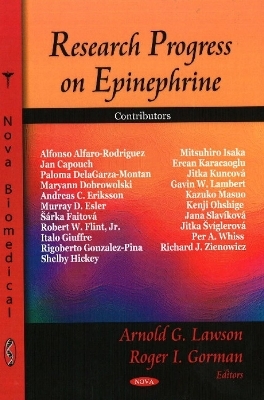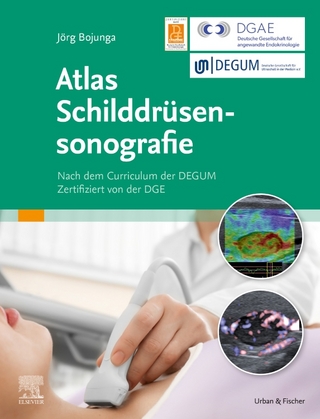
Research Progress on Epinephrine
Nova Science Publishers Inc (Verlag)
978-1-60456-443-3 (ISBN)
This book is devoted to new research on epinephrine (INN) sometimes spelled "epinephrin" or "adrenalin" respectively, which is a hormone when carried in the blood and a neurotransmitter when it is released across a neuronal synapse. It is a catecholamine, a sympathomimetic monoamine derived from the amino acids phenylalanine and tyrosine. When secreted into the bloodstream; it rapidly prepares the body for action in emergency situations. The hormone boosts the supply of oxygen and glucose to the brain and muscles, while suppressing other non-emergency bodily processes (digestion in particular). It increases heart rate and stroke volume, dilates the pupils, and constricts arterioles in the skin and gut while dilating arterioles in skeletal muscles. It elevates the blood sugar level by increasing catalysis of glycogen to glucose in the liver, and at the same time begins the breakdown of lipids in fat cells. Like some other stress hormones, epinephrine has a suppressive effect on the immune system. Although epinephrine does not have any psychoactive effects, stress or arousal also releases norepinephrine in the brain. Norepinephrine has similar actions in the body, but is also psychoactive. Epinephrine is used as a drug to treat cardiac arrest and other cardiac dysrhythmias resulting in diminished or absent cardiac output; its action is to increase peripheral resistance via a1-adrenoceptor vasoconstriction, so that blood is shunted to the body's core, and the a1-adrenoceptor response which is increased cardiac rate and output (the speed and pronouncement of heart beats). This beneficial action comes with a significant negative consequence -- increased cardiac irritability -- which may lead to additional complications immediately following an otherwise successful resuscitation. Alternatives to this treatment include vasopressin, a powerful antidiuretic which also increases peripheral vascular resistance leading to blood shunting via vasoconstriction, but without the attendant increase in myocardial irritability.
Preface; Effectiveness of Out-of-Hospital Cardiopulmonary Resuscitation with Resuscitative Drugs Such as Epinephrine; Up-to-Date on Ibopamine, a New Alpha-Adrenergic and D1 Dopaminergic Drug; Intact Environmental Habituation and Epinephrine-Induced Enhancement of Memory Consolidation for a Novel Object Recognition Task in Pre-Weanling Sprague-Dawley Rats; Epinephrine Overview in the Heart; Epinephrine and Its Potential Novel Usage in Surgery; Platelets and Epinephrine; "Research Progress on Epinephrine" Does Epinephrine Cause Hypertension? "Epinephrine Hypothesis"; Pontine and Cerebellar Differential Norepinephrinergic Response after Cortical Ablation and Fe2Cl-induced Cortical Injury; Differential Epinephrine and Norepinephrine Release from the Sympathectomised Rat Heart Compartments; Index.
| Erscheint lt. Verlag | 1.9.2008 |
|---|---|
| Zusatzinfo | Illustrations |
| Verlagsort | New York |
| Sprache | englisch |
| Maße | 260 x 180 mm |
| Gewicht | 536 g |
| Themenwelt | Medizinische Fachgebiete ► Innere Medizin ► Endokrinologie |
| Studium ► 1. Studienabschnitt (Vorklinik) ► Physiologie | |
| ISBN-10 | 1-60456-443-1 / 1604564431 |
| ISBN-13 | 978-1-60456-443-3 / 9781604564433 |
| Zustand | Neuware |
| Haben Sie eine Frage zum Produkt? |
aus dem Bereich


